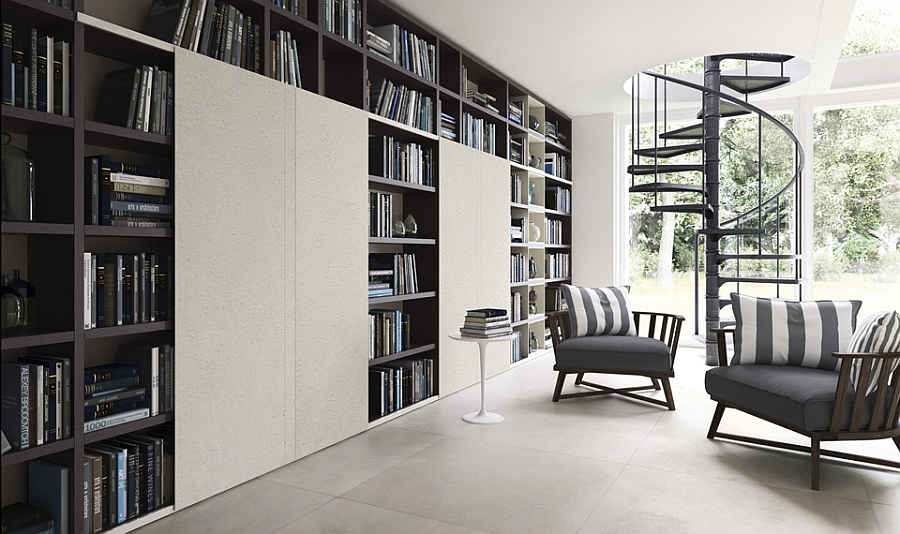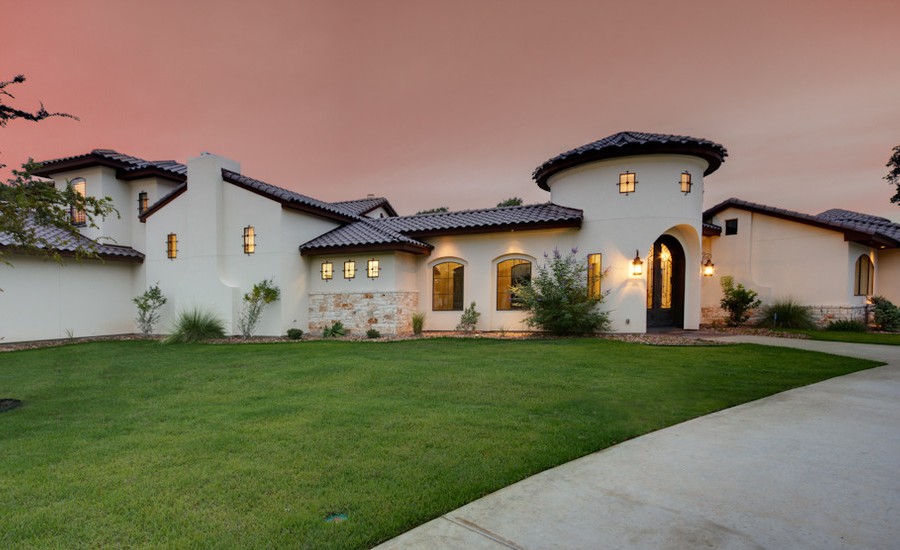When choosing the right flooring material for a home, there are several things to consider. First, consider the function of the room. Will it be used as a living room or bedroom? Does it need to be waterproof or will a non-porous material do? If the room is subject to moisture, such as a bathroom or kitchen, then more durable and water-resistant materials should be chosen.
Next, assess your lifestyle. Will high-traffic areas require more wear-resistant materials? Are there any pets that may require scratch-resistant floors? Are comfort and warmth important factors? Also, look at how much time and effort you’re willing to put into maintaining your floors. Some materials are easier to clean than others and require less maintenance over time.
Finally, consider your budget when selecting flooring material. Different types come with different price tags and can range from affordable laminate to an engineered hardwood or stone tiles. Decide how much you’re willing to invest in quality flooring and make sure you find something that meets your needs without breaking the bank.
Types of Flooring
When deciding on flooring, it’s important to consider the function of the room and the lifestyle of your household. There are a variety of materials available, each with its own advantages and disadvantages. Common types include hardwood, laminate, vinyl, linoleum, carpet, tile and stone. Hardwood is a classic choice that adds a warm and natural feel to any room but requires regular maintenance. Laminate is a cost-effective alternative that is also durable and easy to maintain. Vinyl is water-resistant and comes in many colours and patterns. Linoleum has existed for decades but still offers modern style options such as wood grain or marbled prints. The carpet is soft underfoot and provides comfort in bedrooms or living rooms but needs to be vacuumed regularly. Tiles come in ceramic or porcelain varieties which provide an elegant look and are great for high-traffic areas or wet spaces like bathrooms or kitchens. Stone tiles offer timeless beauty with natural variations in colour and texture but are more expensive than other materials. With so many options available, you’re sure to find the perfect type of flooring for your home.
Ceramic Tiles
Ceramic tiles are an excellent choice for flooring in any homeroom. They offer a timeless look with natural variations in colour and texture, making them easy to customize to any style. Ceramic tiles are also durable, water-resistant, and low-maintenance. They come in a variety of shapes, sizes, and colours so you can easily create a unique look that fits your space perfectly. Additionally, ceramic tiles provide good insulation which helps keep your home cool during hot summers. With their versatility and long-lasting beauty, ceramic tiles make an ideal choice for any flooring project.
Ceramic tile durability and water resistance make it an ideal option for bathrooms, kitchens, and other high-traffic areas. Plus, ceramic tiles come in a variety of shapes, sizes, and colours so you can easily create a unique look that fits your space perfectly. Ceramic tile flooring is also easy to clean and maintain, making it low maintenance for busy homeowners. Additionally, ceramic tiles provide good insulation which helps keep your home cool during hot summers. With its versatility and long-lasting beauty, ceramic tile flooring is an excellent choice for any home.
Installing and Maintaining Ceramic Tile Floors
Installing and maintaining ceramic tile floors is a great way to add beauty and value to your home. The process is relatively straightforward, but it’s important to take certain steps to ensure the tiles are properly installed and cared for. To start, make sure you have the correct adhesive for your flooring type – there are different adhesives for natural stone, porcelain, and other varieties. You should also use a mortar-based solution when installing large or irregularly shaped tiles. Once the installation is complete, it’s essential to properly seal the area so that moisture won’t penetrate the grout or cause any damage to the tiles. To keep your ceramic tile floors looking their best, it’s important to regularly sweep and mop them using mild detergent. Additionally, be sure not to use wax or cleaning products with abrasive ingredients as these can damage your flooring. With proper installation and maintenance, ceramic tile floors will stay beautiful for many years to come!
Cost Factors for Ceramic Tiles
When it comes to choosing to floor for your home, a great option is ceramic tile. Ceramic tiles are durable and come in a variety of colours and styles. However, before you make an investment in ceramic tiles, it’s important to take into consideration the cost factors associated with them. The cost of ceramic tile depends on the size and quality of the material, as well as installation costs. Larger tiles will cost more than smaller ones, and high-end tiles can be quite expensive compared to standard varieties. Additionally, if you choose to hire a professional installer, this can add significantly to the overall cost. While ceramic tile may be a pricier option up front, the long-term benefits such as durability and easy maintenance will make it worth your while!
Vinyl Flooring
Vinyl flooring is an affordable, low-maintenance choice for many homeowners. It comes in a wide variety of styles and colours, and can easily imitate the look of more expensive materials such as wood or stone. Vinyl flooring is highly durable and water resistant, making it ideal for areas prone to moisture such as bathrooms and kitchens. Additionally, its soft surface makes it comfortable to stand on for long periods of time. The cost of vinyl flooring varies depending on the quality and style you select, with luxury vinyl tiles being the most expensive option. If you’re looking for an easy-to-clean, budget-friendly option for your home, consider investing in the vinyl flooring!
Vinyl flooring is also highly durable and water resistant, making it ideal for areas prone to moisture such as bathrooms or kitchens. Its soft surface makes it comfortable to stand on for long periods of time, making it great for busy households with kids or pets. Additionally, vinyl flooring is easy to clean and maintain, requiring only regular sweeping or mopping. Investing in vinyl flooring can be a smart decision for those looking for a budget-friendly flooring solution that looks good and lasts!
Installing and Maintaining Vinyl Floors
Installing vinyl floors is a relatively easy task for most do-it-yourselfers. It can be applied over existing flooring with minimal preparation, making it an ideal choice for quick renovations. Vinyl planks and tiles usually come with an adhesive backing that can simply be peeled off and placed onto the floor. For new construction projects, preparing the subfloor properly before installation is important to ensure a long-lasting result. Once installed, vinyl flooring requires very little maintenance — simply sweep or mop regularly to keep it looking like new. Spills should be wiped up quickly to avoid staining or discoloration, and deep cleaning can be done occasionally with a mild detergent or vinegar solution. With proper care, your vinyl floor should last for many years!
Cost Factors for Vinyl Flooring
Vinyl flooring is a cost-effective and stylish choice for any home. It is available in a variety of colours, textures, and patterns to suit any décor. While the initial cost of vinyl flooring can vary greatly depending on the quality, style, and installation method, it is generally an affordable option. The total cost of installing vinyl flooring will depend on several factors such as the type of product chosen, the size of the area being covered, labour costs for installation, and materials needed for preparation. Other factors that may increase the overall cost include underlayment requirements, additional edging or trim pieces needed to complete the project, and extra time and labour if removing the old flooring is necessary. Considering all these factors can help ensure that you get the best value for your money when installing new vinyl flooring.
Hardwood Flooring
Hardwood flooring is a timeless and classic choice for any home. It is known for its natural beauty and durability, making it an ideal long-term investment. Hardwood flooring can bring an elegant yet cozy atmosphere to any room and can be found in a variety of species, finishes, and styles. While the initial cost of hardwood flooring may seem high, the lifetime durability of the material makes it worth every penny. Installation costs will depend on the size of the area being covered, as well as the quality of the product chosen. Additional costs may include trim pieces needed to complete the project or removal of existing flooring if necessary.
Not only do hardwood floors look great, but they are also incredibly durable and can last for decades with proper care. Hardwood flooring is also incredibly versatile and can easily be refinished or stained if desired. Cleaning wood floors is simple, requiring only a basic mop or vacuum cleaner for regular maintenance.
Installing and Maintaining Hardwood Floors
When it comes to installing hardwood floors, it is best to hire a professional contractor who has experience with the material. This will ensure that the installation process goes smoothly and that the finished product looks its best. Once the hardwood floor is installed, maintaining it is relatively simple by using a good cleaning routine and protecting the surface from water damage or other potential hazards.
Cost Factors for Hardwood Floors
The cost of hardwood flooring can vary widely depending on the type of wood chosen as well as any additional materials required for installation such as trim pieces or removal of existing flooring if necessary. The size of the area being covered will also have an impact on price, so it’s important to get accurate measurements before committing to a purchase. Generally speaking, however, hardwood floors provide excellent value due to their long-term durability and timeless beauty.
Laminate Flooring
Laminate flooring is an affordable alternative to hardwood that offers beauty, durability and versatility. Laminate flooring is made up of several layers of wood paper and plastic coated with a thin layer of protective finish. This makes it resistant to scratching and staining and easy to clean. It also offers the look of hardwood at a fraction of the cost.
Laminate flooring is easy to install and can be done by an experienced DIYer or professional contractor. It can be installed directly over existing floors, eliminating the need for costly removal or preparation. Additionally, laminate floors are available in a wide variety of styles, colours and finishes so you can find something that matches your décor perfectly.
When it comes to maintenance, laminates are low-maintenance and require only occasional sweeping or vacuuming to keep them looking their best. For tougher dirt or spills, simply use a damp mop with a mild detergent then dry with a soft cloth afterward. Laminate floors offer excellent value for money due to their affordability, ease of installation and long-term durability.
Cost Factors for Laminate Wood Floors
The cost of laminate wood floors varies based on quality, brand and style but generally offers good value for money due to its affordability when compared with hardwood flooring solutions. It is worth noting that there may be additional costs associated with installation depending on the type of subfloor you have and any additional materials needed during installation such as underlayment or trim pieces.
Other Types of Floorings Materials
When choosing to floor a home, there are many materials to consider. Resilient (vinyl) floorings provide a durable and affordable option, while sheet vinyl floorings offer style options that can mimic the look of other floors such as wood or stone. Cork floorings are naturally resilient and have sound-absorbing qualities, while natural stone floorings provide an elegant, timeless look with excellent durability. Luxury vinyl tile (LVT) floorings also offer the look of real wood but are more resilient and easy to maintain. Real wood-engineered wood floorings provide stability and durability in high-traffic areas, while porcelain tile floorings combine beauty and strength for use in any area of the home. With so many different types of flooring materials available, it is important to take time to compare each option to determine which one best fits your needs.











